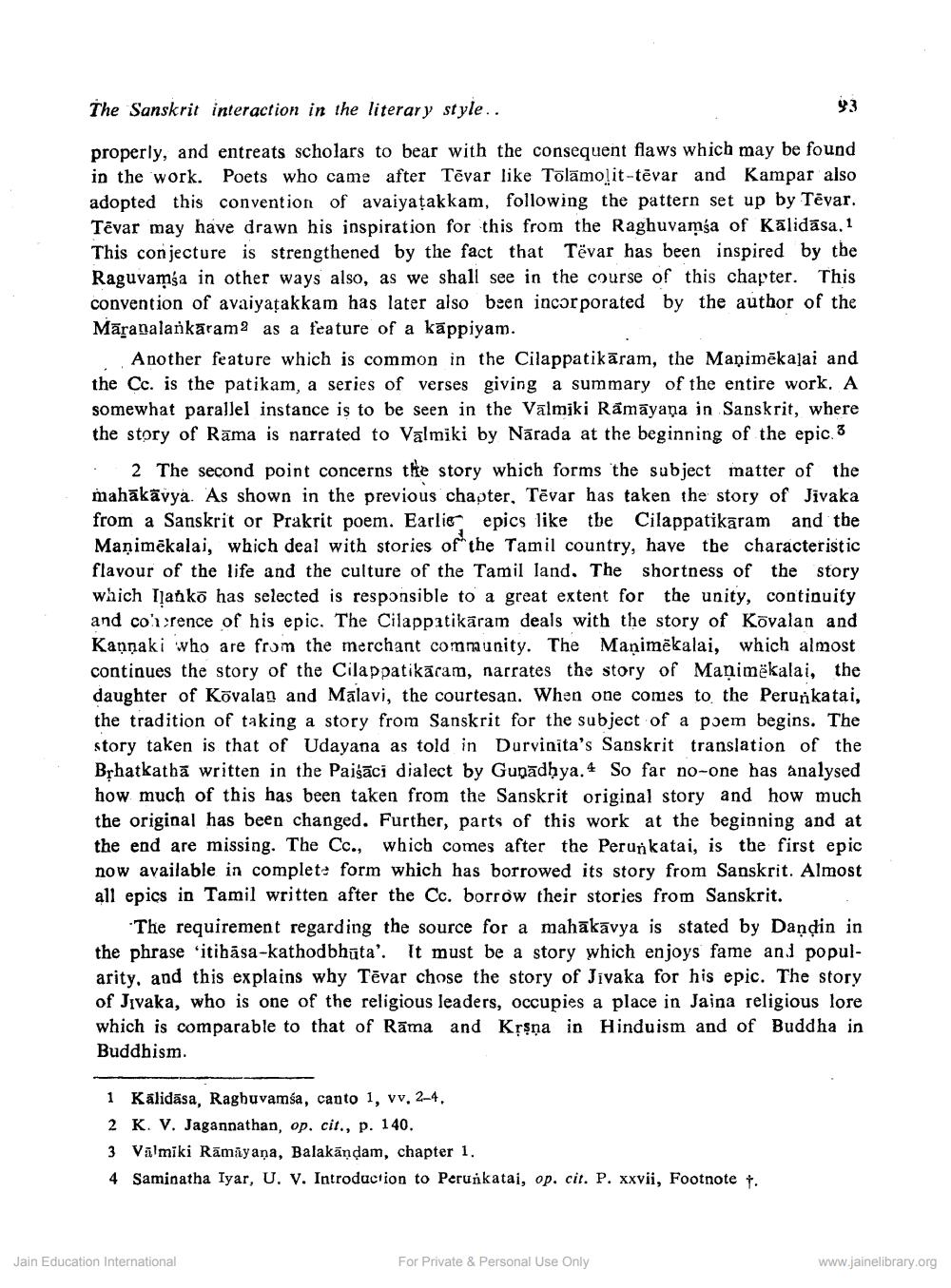________________
The Sanskrit interaction in the literary style.. properly, and entreats scholars to bear with the consequent flaws which may be found in the work. Poets who came after Tēvar like Tolāmolit-tēvar and Kampar also adopted this convention of avaiyaţakkam, following the pattern set up by Tēvar. Tēvar may have drawn his inspiration for this from the Raghuvamsa of Kalidāsa. 1 This conjecture is strengthened by the fact that Tëvar has been inspired by the Raguvamsa in other ways also, as we shall see in the course of this chapter. This convention of avaiyațakkam has later also been incorporated by the author of the Mārapalankārama as a feature of a kāppiyam.
Another feature which is common in the Cilappatikāram, the Manimēkajai and the Cc. is the patikam, a series of verses giving a summary of the entire work. A somewhat parallel instance is to be seen in the Valmiki Rāmāyaṇa in Sanskrit, where the story of Rāma is narrated to Valmiki by Nárada at the beginning of the epic. 3 • 2 The second point concerns the story which forms the subject matter of the mahākāvya. As shown in the previous chapter, Tēvar has taken the story of Jivaka from a Sanskrit or Prakrit poem. Earlie epics like tbe Cilappatikāram and the Manimēkalai, which deal with stories of the Tamil country, have the characteristic flavour of the life and the culture of the Tamil land. The shortness of the story which Iļanko has selected is responsible to a great extent for the unity, continuity and corrence of his epic. The Cilappatikāram deals with the story of Kovalan and Kannaki who are from the merchant community. The Manimēkalai, which almost continues the story of the Cilappatikācam, narrates the story of Manimëkalai, the daughter of Kõvalan and Malavi, the courtesan. When one comes to the Perunkatai, the tradition of taking a story from Sanskrit for the subject of a poem begins. The story taken is that of Udayana as told in Durvinita's Sanskrit translation of the Brhatkathā written in the Paisāci dialect by Gupādhya.4 So far no-one has analysed how much of this has been taken from the Sanskrit original story and how much the original has been changed. Further, parts of this work at the beginning and at the end are missing. The Co., which comes after the Perun katai, is the first epic now available in complete form which has borrowed its story from Sanskrit. Almost all epics in Tamil written after the Cc. borrow their stories from Sanskrit.
The requirement regarding the source for a mahākāvya is stated by Dandin in the phrase 'itibāsa-kathodbhūta'. It must be a story which enjoys fame and popularity, and this explains why Tēvar chose the story of Jivaka for his epic. The story of Jivaka, who is one of the religious leaders, occupies a place in Jaina religious lore which is comparable to that of Rāma and Krşņa in Hinduism and of Buddha in Buddhism
1 Kalidasa, Raghuvamsa, canto 1, vv, 2-4, 2 K. V. Jagannathan, op. cit., p. 140. 3 Valmiki Rāmāyaṇa, Balakāndam, chapter 1. 4 Saminatha Iyar, U. V. Introduction to Perunkatai, op. cit. P. xxvii, Footnote 7.
Jain Education International
For Private & Personal Use Only
www.jainelibrary.org




